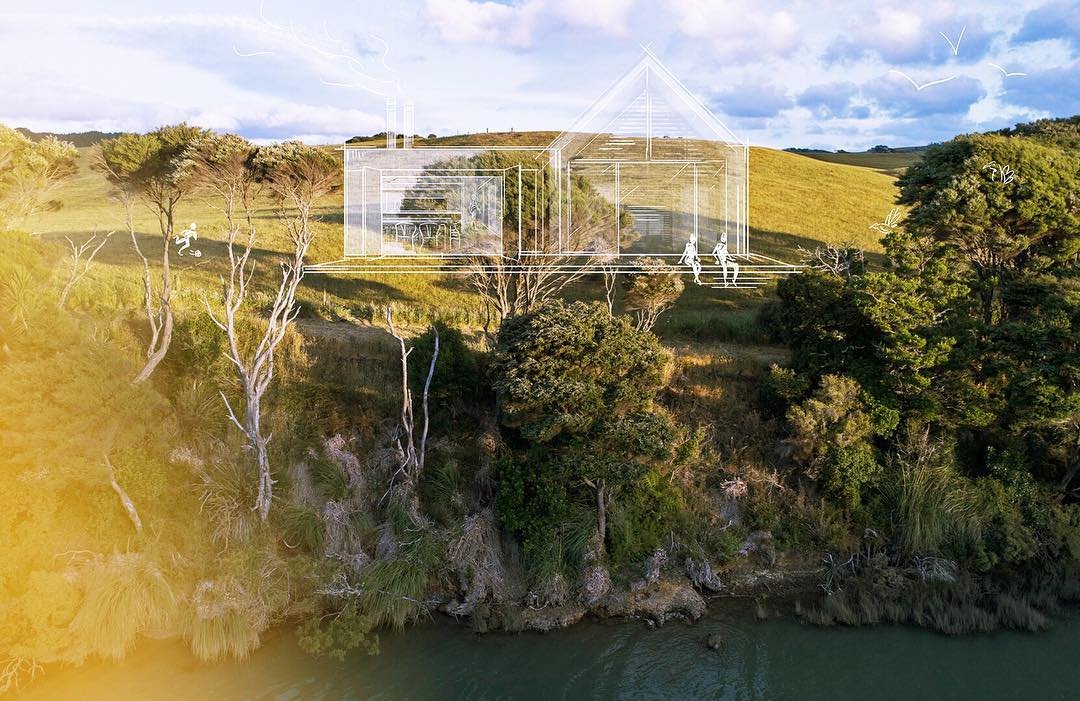How Rangitahi is planting a new seed of urban development in the heart of Raglan

Since the private plan commenced six years ago, Rangitahi has sold 88 residential lots (out of the proposed 550 sections to come), and four mixed-use lots sanctioned for development. The residential buildings aim to allow room for diversity in scale and form, but are subject to the architectural guidelines designed and reviewed by Rangitahi. This means the residential development will balance between diversified building types while abating environmentally damaging architecture. The specified design guidelines are found here, which ensures environmental and cultural continuity, prescribes the use of better materials such as locals timbers and attains sustainable architectural practices with respect to land and sea. The average section size is 600 square-metres, but range from 385 to 1356 square metres – and for those wanting to get their hands on a piece: prices start at $275,000, with an average price at $350,000.
Peacocke says where the land is situated, being so close to the town centre, it makes sense to design Raglan in a more organic way and grow in this direction.
“We have consistently worked on the big idea about how we could do awesome things, not to just create a suburbia, but a place with a community vibe.” ?

Additionally, the development will see the creation of various community services, such as cafés, boutique shops, office spaces, and additional ‘mixed-use’ spaces include a public park, community gardens, and access to Rangitahi walking tracks around the peninsula. Peacocke refers to these as ‘green spaces’ and invites local community and Rangitahi residents to enjoy and help maintain the landscape in unison.

Peacocke says it hopes to create character areas on these lots and offer services to the Raglan community.
“Our goal is to help Raglan grow and prosper and to attract new businesses and job opportunities to the town.”
?
It’s interesting times for Raglan, which holds a modest population of 3,120 people, and has long been known for its strong connection to its local culture, environment and Kaupapa. So, unsurprisingly not everyone has jumped on board with talks of looming large-scale development, and intentions to bring further business to the region. Reportedly, locals have squabbled over the increased pressure it would have on local infrastructure, and the price it would cost to the towns vernacular, with one community baron who remarked to Stuff: ‘it could leave it looking like Coromandel resorts’. However, it’s not all urban sprawl and permissive planning, and rather ironically, Rangitahi has consulted with local council – who have supported the project – to ensure it future proofs and preserves Raglan’s identity.
Peacocke understands people get afraid of growth and change, but has done things differently and taken on board the perspective of the community.
“We have found that people who have bought land off us already have a strong connection to Raglan, whether they have been coming here for years or have family here, they are often connected to the land already.”
While some community larks are up in arms, much of the local business fraternity is in behind the initiative and have welcomed the opportunity to invite people into Raglan’s benign coastal setting.
“Certainly people that live here want to keep things local, however, I think at a certain point business really struggles here in the winter and with more people, it could really help, it doesn’t take away [from the fact] that we are all for supporting local.”

The project hasn’t selected architects, but has fostered lots of interest from designers and architects alike, who are keen to participate in the project. Where Peacocke says, they like the idea that they could design a home here and will sit alongside well-designed homes, which have a little bit more thought and care put into them.
Rangitahi aligns with the growing number of co-houses overseas, based on sustainable living and mutually supported communities. The concept originated in Denmark in the 1970’s and has since flooded into Switzerland, the U.S, and other Nordic countries. For New Zealand, the co-operated housing development could rouse real change, but will it fit with New Zealand’s culture, which has long fenced off our neighbours and safeguarded privacy?
Peacocke says, it is definitely a new way of thinking for the Kiwi culture, and that those who dream of owning a four-acre block struggle with the concept. She adds that kind of land is not affordable anymore.
“As we understand it, a ‘lifestyle block’ is now deemed to be very unproductive New Zealand land. Living on less land and being clever with architecture can create privacy and enjoyable spaces to live in. A six-foot fence is not the right solution. Raglan has a very supportive and collaborative community, so we are growing on that same vibe.”
It’s been noted that with co-operative schemes such as these, the difficulty comes down the line, where for whatever reason incumbent residents have to move on and be replaced with new ones. So, how will Rangitahi manage and ensure continuity?
Peacocke says, there will always be the odd resale when people’s circumstances change, but thinks it has attracted a really lovely community who are very excited about building their dream home and lifestyle on the peninsula.
“All houses built on the peninsula have to be approved by our design review panel, so the homes will reflect our ethos regardless.
“I think people who live more sustainably and are more aware of their effect on the environment are drawn to Raglan. They want to have a lesser footprint on the earth, and there is so much support here to help with that lifestyle regardless of whether they buy land on the peninsula or not. ‘Plastic Bag free Raglan‘ is just one of the many examples of sustainable initiatives here.”



